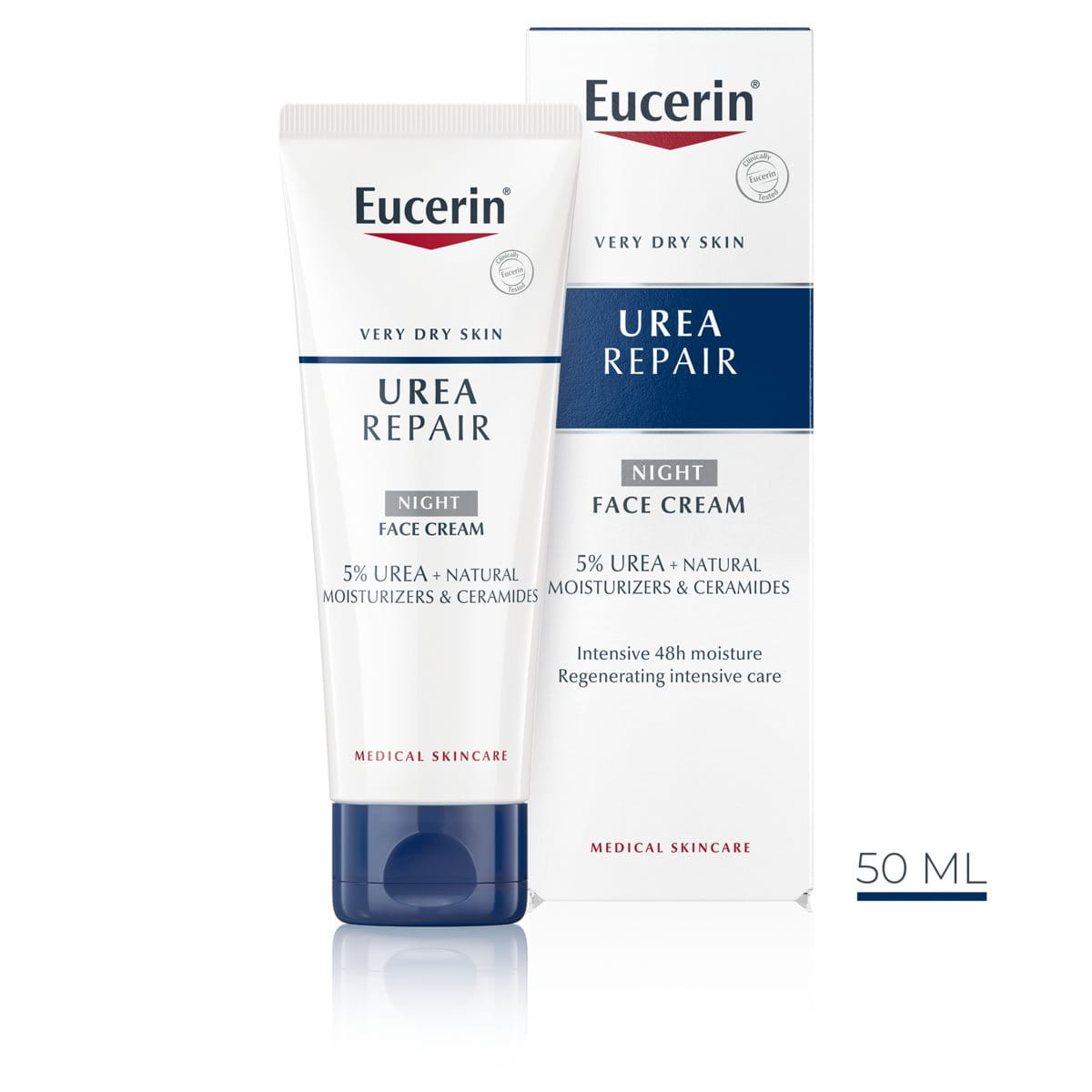We take responsibility. For your skin. And our planet.

We take responsibility. For your skin. And our planet.
About
Read more about our product
Why do I need a special moisturiser for my face?
Your face is generally exposed to the causes of dry skin, like sunshine, wind and detergents, much more frequently than the rest of your body, and therefore needs frequent moisturisation to prevent dry skin symptoms, such as itching, redness, scaling and irritation. Eucerin UREA REPAIR Rich Face Cream contains key ingredients that lock in moisture to aid the regeneration process that mainly occurs at night. Learn more about dry facial skin.
Why should I use Eucerin UREA REPAIR Rich Face Cream instead of just using a body product, such as Eucerin UreaRepair Plus 5% Urea Body Cream, on my face?
Facial skin is different to body skin, and Eucerin UREA REPAIR Rich Face Cream is specifically formulated for facial skin - it has a superior texture to Eucerin UreaRepair Plus 5% Body Cream, making it more easily absorbed and better tolerated (when used on the face).
Is Eucerin UREA REPAIR Rich Face Cream safe for children?
This product was not designed for children, and therefore has not been tested by children. If you want a product that is suitable for children, try Eucerin AtopiControl Body Care Lotion or Face Care Cream. Both of these products are suitable for babies.
I am not sure if I have dry skin, extremely dry skin, or a skin condition. How can I tell the difference?
You can find information about dry skin, as well as skin conditions such as Atopic Dermatitis on face and body and diabetes, throughout our website. But if you are worried or unsure about your symptoms, or they are becoming worse, we recommend you see your dermatologist or pharmacist for a face-to-face diagnosis.
Read also some related articles
Urea, Ceramide 3, NMFs
Learn More